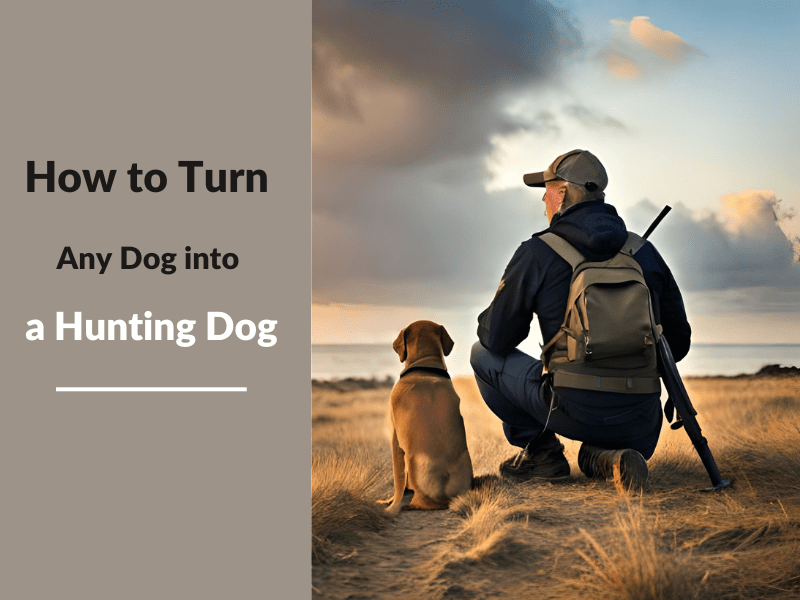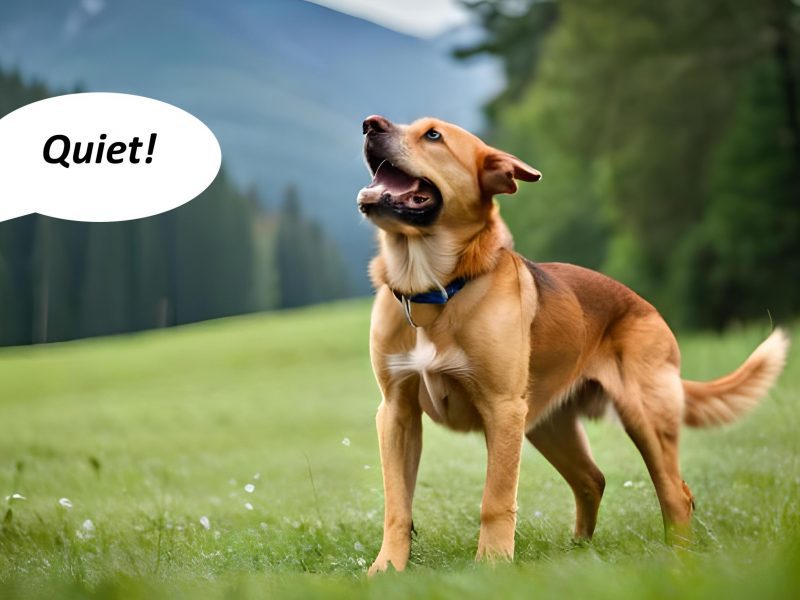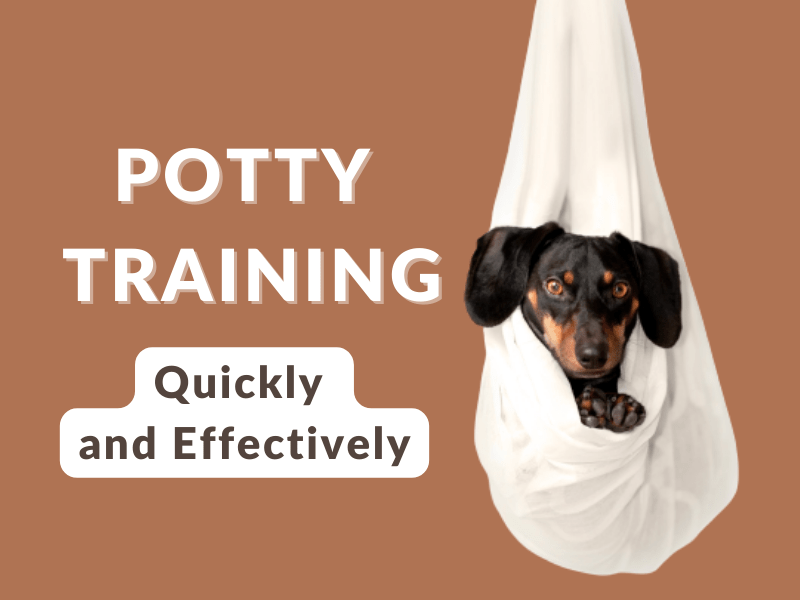Are you someone who loves hunting but doesn’t have a hunting dog? Or maybe you have a dog, but you don’t think they have the right hunting traits? Whatever your situation may be, this article is here to help you! we’ll explore the ways you can turn any dog into a hunting dog with patience, practice, and the right techniques. Hunting with a dog can be a fulfilling experience, and with the right training, any breed can be transformed into a skilled hunting companion. Let’s get started on this exciting journey of learning how to make your furry friend the ultimate hunting partner!
The Benefits of Having a Hunting Dog
Hunting has always been a popular pastime, and many people enjoy it for various reasons. Some find it a great way to bond with nature, while others do it for the thrill of the chase.
If you like to hunt, having a dog to help you can make it more special. Hunting dogs make good friends for hunters. We teach them to chase animals and bring back birds that we shoot down. They also come along for long trips and keep us from getting bored. Hunting dogs have strong noses and ears. They can help us find animals we can’t see or smell on our own.
Turning Any Dog into a Hunting Dog
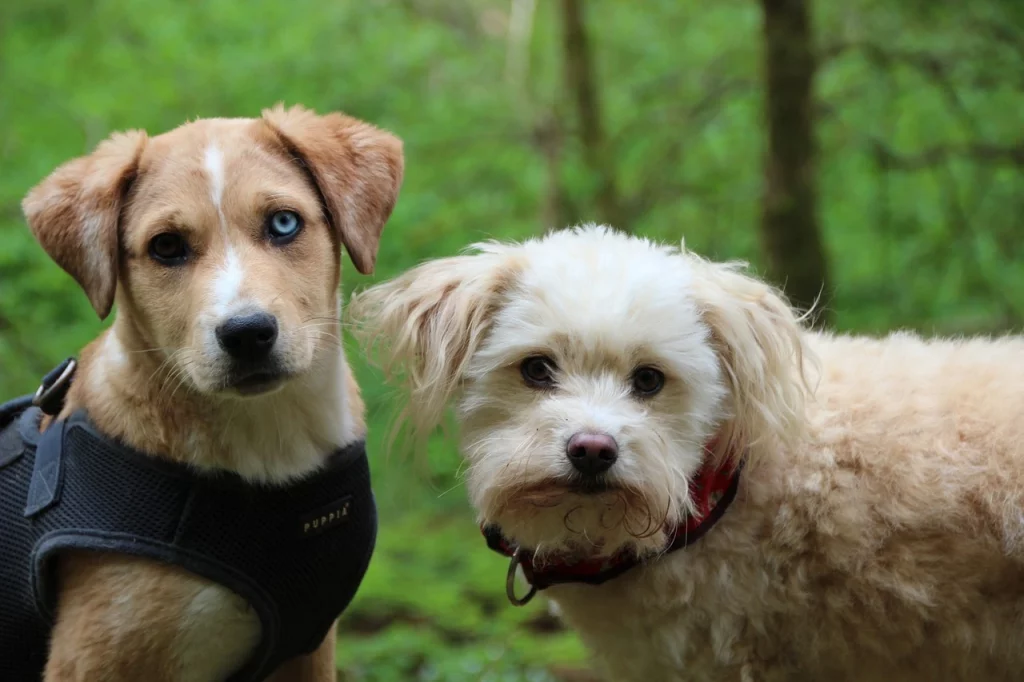
You might think that only certain dog breeds are good for hunting, but actually, any dog can learn to be a hunting dog if you teach them how patiently and correctly. It doesn’t matter if you have a big Labrador or a small Chihuahua, there are specific techniques you can use to help them become skilled hunters.
However, teaching your dog to hunt will take time and effort from you. There are many different ways to train your dog, and you’ll need to learn about them before starting. Remember though, every dog is different, so what works for one might not work for another. If you keep trying and give it your all, any breed of dog can become a great hunting partner.
Understanding Your Dog’s Breed
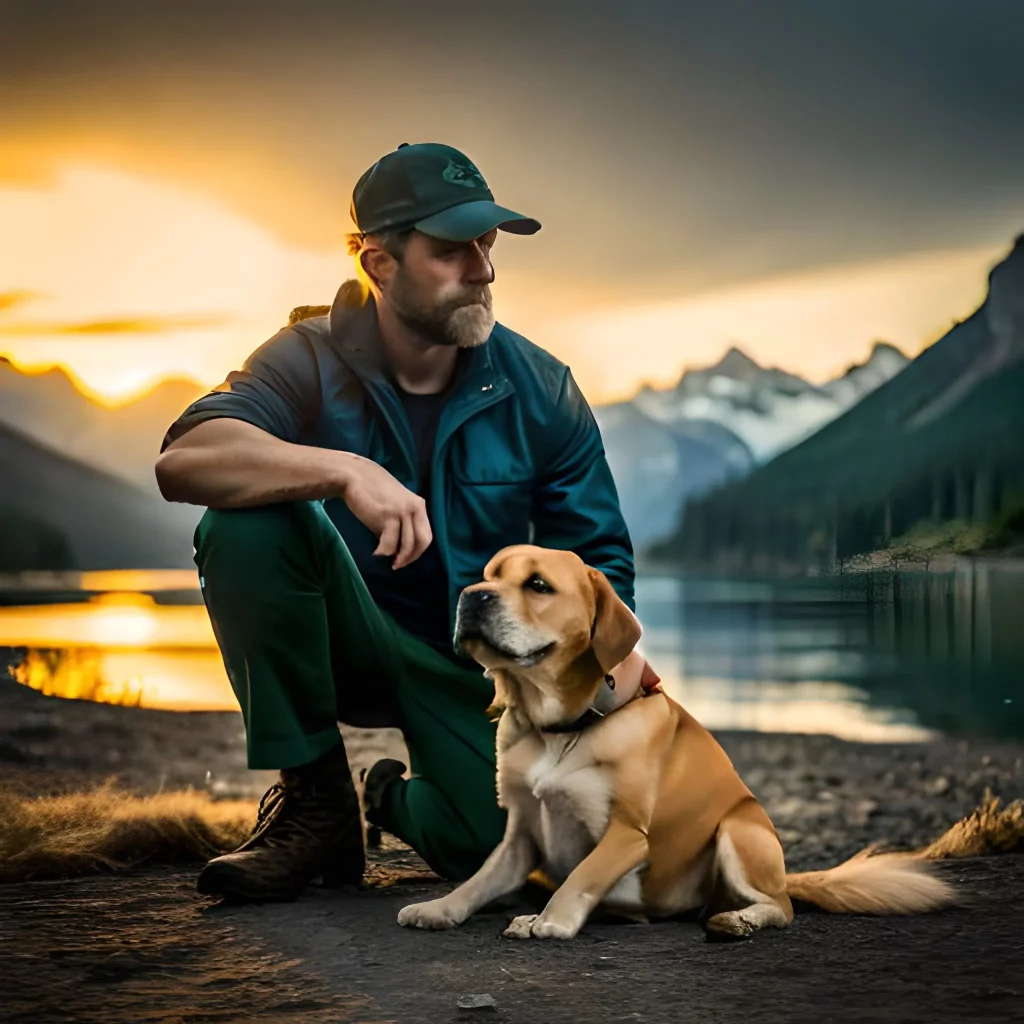
1. Different Breeds, Different Instincts
When it comes to training a dog for hunting, it’s important to consider the breed’s instincts. Different breeds were originally bred for different purposes, such as retrieving waterfowl or tracking games.
Understanding your dog’s breed can help you hone their innate hunting skills. For example, a Labrador Retriever would be great at retrieving birds while a Beagle is skilled at tracking scents for small game.
It’s also important to keep in mind that some dogs that are a mix of two or more breeds may have different hunting instincts from each parent’s breed. So, you will have to think about which instinct is more dominant in your dog and train them accordingly.
2. Character Matters
Every dog has its breed instincts, each dog also has a different individual nature that can affect how good they are at hunting. Some may get distracted quickly or feel too scared when they encounter new situations or places.
Taking the time to understand your dog’s personality can help you tailor your training methods and make sure they’re comfortable with the process. Some dogs may need more encouragement and positive reinforcement than others to build confidence during training exercises.
Overall, understanding your dog’s breed and temperament is crucial when training them for hunting. By considering these factors and adapting your approach accordingly, you’ll be able to bring out the best in your canine companion on the hunt.
Basic Training Techniques
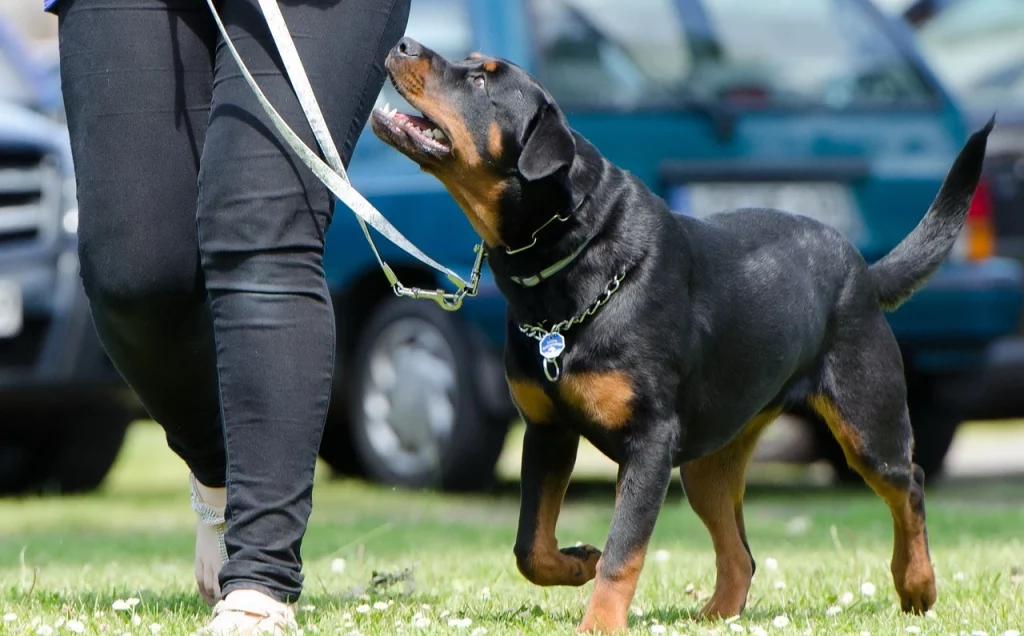
1. Cover basic obedience commands
One of the most crucial aspects of training any hunting dog is teaching them basic obedience commands. These commands serve as the foundation for more advanced hunting training techniques.
Start by teaching your dog the “sit” command. Hold a treat above their nose and slowly move it up and back towards their tail while saying “Sit.” Once they sit down, give them the treat and repeat this process until they learn to associate sitting with receiving a reward.
Next up is “stay.” With your dog in a sitting position, hold out your palm and say “Stay.” Take one step back from your dog and return to them quickly, rewarding them with praise or a treat if they remained in place. Gradually increase the distance between you and your dog as they improve at staying put on command. Or you can start with these 4 Easiest Commands To Teach Your Dog.
2. Leash training and recall training
Leash training is essential for keeping your hunting dog under control during hunts or outdoor adventures. Begin by putting on your dog’s leash before walking out the door so that they become used to it being part of their routine.
When outside, keep an eye on how much tension there is on the leash. If it’s too loose, gently tug on it to remind them not to stray too far from you.
Recall training involves teaching your dog to come back when called. Start by calling out their name followed by “come” in an excited tone while crouching down with open arms as if you’re about to hug them.
Reward them with treats or praise when they come running towards you. Over time, you can gradually increase the distance between yourself and your dog when calling out for them.
3. Use Positive Methods for Encouragement
To make your dog behave well, you should use positive methods of encouragement. When your dog listens to you or behaves well, you should reward them with things like praise, toys, or treats they love. It’s important to give your dog the reward right after they act on the desired behavior, so they remember why they received the reward.
Another positive method is clicker training. Use a clicker to make a sound when your dog performs a desired action, then give them a treat immediately afterward.
This will help them learn that the sound from the clicker means they’ve done something right and that they can expect a reward for it. Remember to be patient and consistent with your positive method as dogs respond best to gradual learning processes over time.
Advanced Hunting Training Techniques
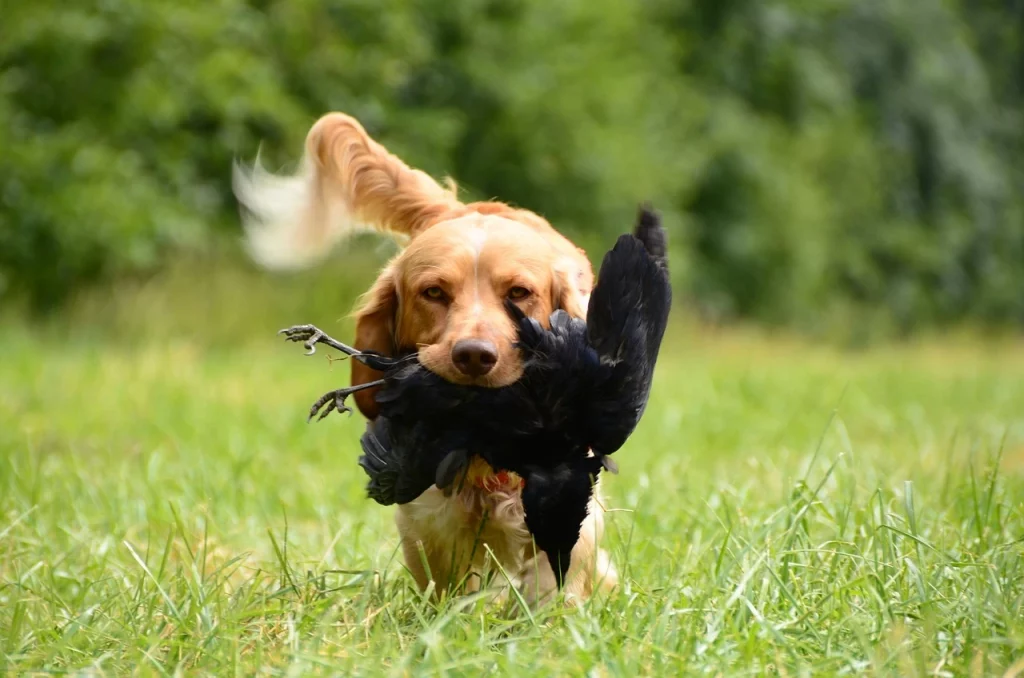
1. Scent Training and Tracking Exercises
One of the most important skills for a hunting dog is the ability to use their sense of smell to track down prey. Scent training is an essential part of any hunting dog’s learning.
Start by introducing your dog to a scent, such as a piece of meat or fur from the animal you will be hunting. Allow your dog to sniff the scent, then hide it in an area where they can find it.
Encourage your dog to locate the scent and praise them when they do. As your dog becomes more proficient at finding scents, increase the difficulty by hiding them in more challenging locations or using different scents altogether.
You can also incorporate tracking exercises, where you drag an object with a scent on it along a specific path and encourage your dog to follow the trail. With consistent training, your hunting companion should be able to track down prey more easily.
2. Training Retrieving Skills
Retrieving is another vital skill for any hunting dog. Start by teaching your dog basic fetch commands using toys or balls.
Once they are comfortable with retrieving objects, introduce decoys or dummies that resemble the animals you will be hunting. Encourage your dog to retrieve these objects and reward them when they do so successfully.
When your hunting dog gets better at finding things, give them harder challenges by throwing objects into deep water or bushes for them to find, just like when you’re really hunting. When you’re practicing, be safe and try your best not to hurt anyone or anything with your gun. Also, be prepared to change based on different outdoor conditions, like wind, rain, or snow.
3. Train Your Dog about the Sound of Gunshots
When training your dog to hunt, it’s important to introduce them to the sound of gunshots in a safe way because a lot of dogs can get scared of loud noises like gunfire. You can start by playing recordings of gunshots on low volume to get them used to it without frightening them. As time passes, you can increase the volume while giving positive feedback to your dog to show them that the sound isn’t dangerous
Once your dog is comfortable with the sound of gunfire, introduce them to firearms in a safe and controlled environment. Start by letting them smell and examine unloaded firearms, then move on to firing blank rounds from a safe distance away.
Continuously decrease the distance between you and your dog while firing blanks, using lots of positive methods for good behavior. With consistent training and patience, any dog can become a skilled hunting companion that brings joy to their owner during outdoor missions.
Safety Considerations
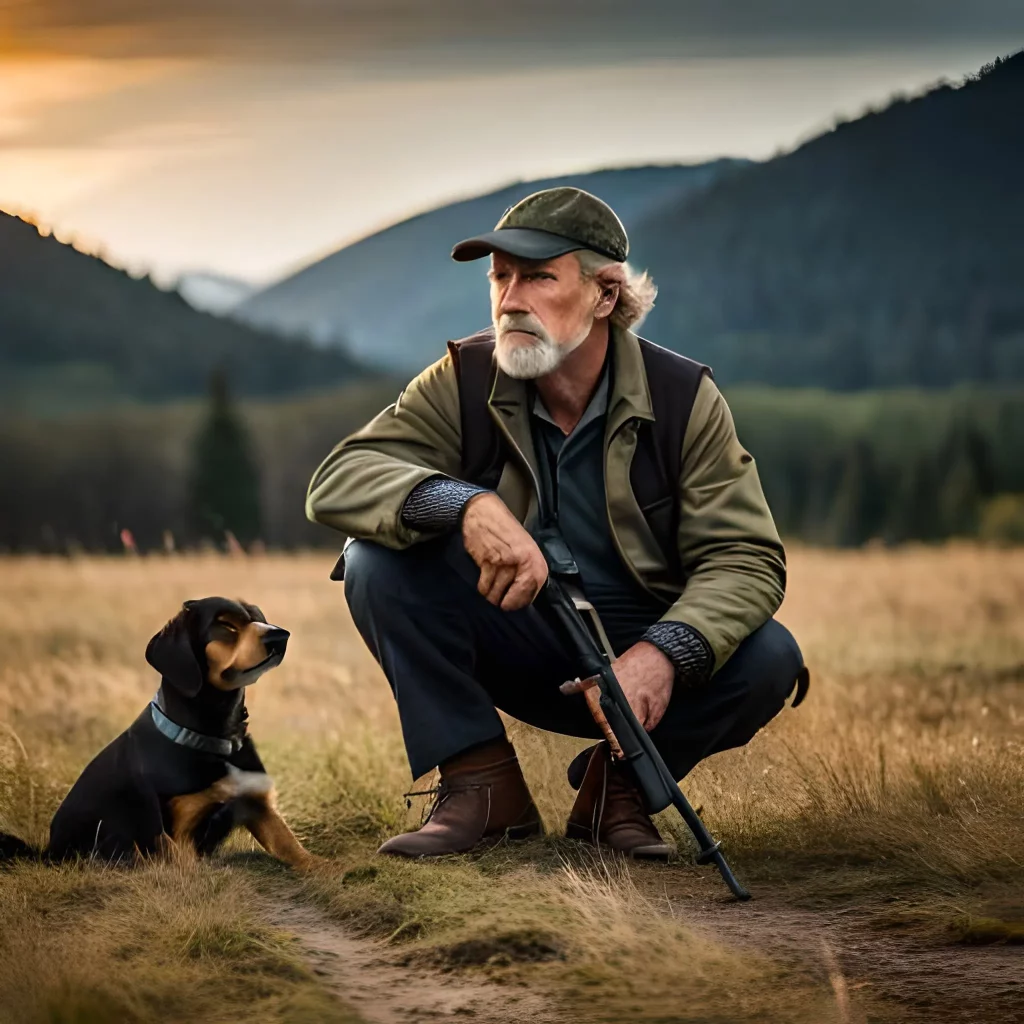
1. Firearms and Hunting Dogs
Even though guns are helpful for hunting, they can be harmful for dogs too. Dogs have tender ears and loud noises can scare them and make them run away or become confused. So, you should always keep your gun on safety until you want to shoot.
Always handle your gun with care and avoid pointing it directly at your dog or any other pet. Additionally, it is important to train your dog to stay behind you while you’re hunting.
This will stop your dog from running into the area of the gun when you’re hunting. You also need to know where other hunters are and watch out for anything that could hurt your dog when you’re hunting.
2. Protective Gear for Hunting Dogs
Dressing up your hunting dog in protective gear is important to keep them safe. Special vests made only for hunting dogs can help protect them from things that can hurt them, like thorns, sticks, or animals like raccoons or coyotes. It also helps them be easily seen in the dark. But not all protective vests are the same, so you should buy one that gives good protection and lets your dog move around freely.
Additionally, consider using boots designed for dogs if you’re hunting in areas with rough terrain or harsh weather conditions. The right protective gear can make all the difference when it comes to ensuring the safety and comfort of your furry companion during a hunt.
Troubleshooting Common Issues
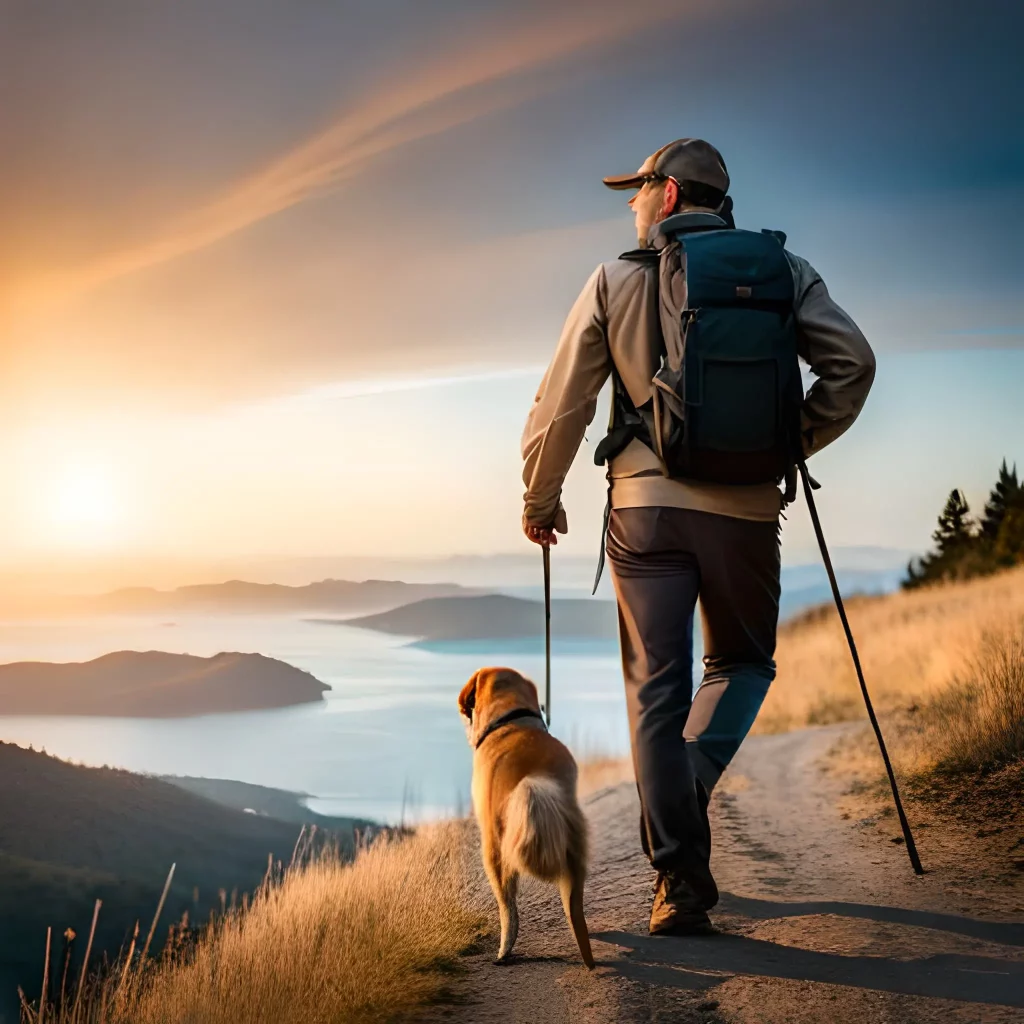
1. Distractions During Hunts
When you’re hunting with your dog, stopping them from getting distracted can be hard. Sometimes other animals, smells, or noises can draw their attention away, taking away their attention from the hunt. To fix this, you should find out what’s causing your dog to lose focus and stop it as best you can.
For example, if your dog gets distracted by other animals in the area, try to hunt in a location with fewer distractions or invest in a GPS collar that can help keep your dog on track. Another solution for distractions during hunts is to reinforce your dog’s training in a controlled environment before taking them out into the field.
Set up training scenarios that mimic hunting situations and gradually increase the difficulty level as your dog becomes more proficient at staying focused on their tasks. Additionally, consider using positive reinforcement techniques such as treats or praise when your dog does stay focused despite distractions.
2. Lack of Focus on Commands
When you’re teaching your hunting dog, they may ignore your commands. This can make you and your dog feel upset, but there are some things you can do to help.
One solution is to go back to basics and review basic obedience commands with your dog. Practice these commands regularly until they become second nature for your furry friend.
Another solution is to vary the training routine from time to time so that it doesn’t become too repetitive or boring for your pup. Consider working with a professional trainer who has experience training hunting dogs specifically.
They may be able to offer insight or techniques that you haven’t tried yet that will help improve focus on commands during hunts. With patience and persistence, you can overcome these common issues and turn any dog into a successful hunting companion!
Conclusion
Teaching your dog how to hunt can be exciting and fun for both of you. To do it, you have to know what breed your dog is, and how they act. You’ll also need to teach them basic commands and some special tricks like how to follow smells or how to work with guns. With these skills, any dog can become a great hunter. But it takes a lot of time, calmness, and doing it over and over again to get it right.
Don’t get discouraged if progress isn’t immediate – every dog is unique in their learning style and pace. Keep the safety of both yourself and your dog in mind throughout the process by using protective gear and safe firearm handling practices.
Take your lovely dog with you and begin this fun and exciting adventure. Whether you’re hunting for fun or you need food, you’ll make a strong connection with your dog while you’re hunting. This bond will stay with you both forever.
Recommended Reading
- How To Stop Your Puppy From Biting: Ultimate Guide
- How to Stop a Dog From Pulling on the Leash
- How To Training A Dog To Pee Outside Step By Step

